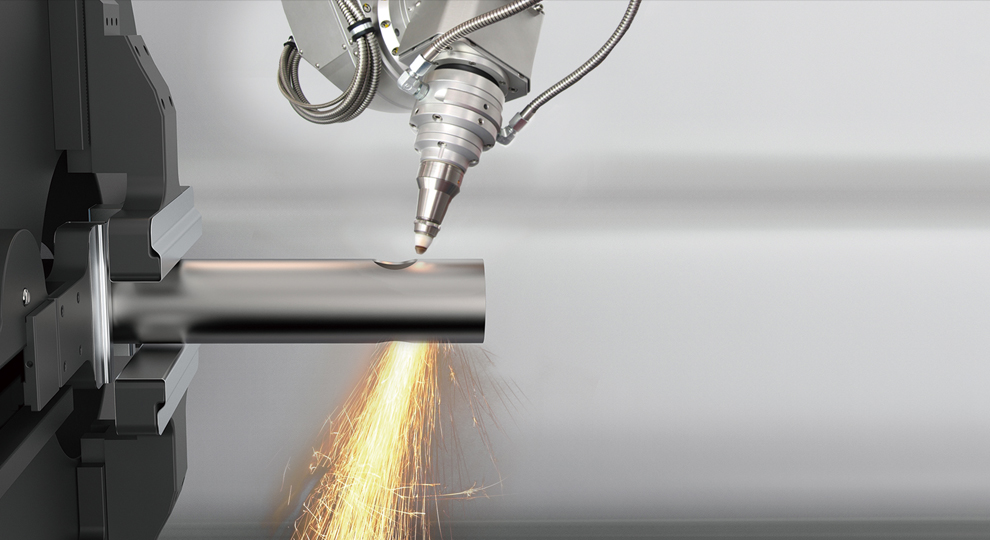The art of cutting soft metals vs. hard metals is crucial for industrial manufacturers aiming for precision in their craft. Understanding the differences in how these metals are processed can significantly sculpt the quality and efficiency of production. In this discussion, we’ll delve deep into contrasting these materials, exploring the methods best suited for each. The choice of method can greatly impact the efficiency of production, making it a foundational aspect for modern manufacturing.

The Basics of Metal Hardness
Before diving into cutting techniques, it’s essential to understand the core differences between soft and hard metals. The hardness of a metal refers to its resistance to deformation. Soft metals like aluminum and copper boast malleability and ductility, allowing for simpler cutting processes. In contrast, hard metals like steel and titanium demand more intensive methods to achieve precise cuts, influencing tool selection and machining strategies.
Characteristics of Soft Metals
Soft metals tend to be lighter and offer ease of shaping. Industries value these metals for applications that require extensive bending or molding, such as in crafting specific machine components. The limited resistance against cutting tools allows manufacturers to utilize less energy-intense processes.
Advantages of Soft Metals in Manufacture
Due to the ease of cutting and shaping, soft metals reduce wear and tear on cutting tools, leading to cost efficiency. They require less energy to shape and can be processed at faster rates, allowing for quicker production cycles and thus higher output, especially when employing methods like cutting aluminum with high precision.
Characteristics of Hard Metals
Hard metals like stainless steel are the backbone of applications requiring strength and heat resistance. They maintain structural integrity under stress, making them ideal for industrial and automotive applications.
Challenges in Cutting Hard Metals
Cutting hard metals is inherently more challenging due to their resistance and toughness. Processes often involve higher force and precision tools equipped to handle the stress without getting damaged. Techniques such as waterjet cutting offer an advantage in such scenarios by using high-pressure jets to slice through hard materials without generating excessive heat.
Contrasting the Cutting Techniques
The methods applied to cut soft and hard metals diverge significantly. For soft metals, methods such as laser cutting, which use focused light beams, can deliver swift results with minimal material wastage. For hard metals, one might rely on CNC machining, which offers high precision despite the increased complexity of the task.
CNC Machining
Computer Numerical Control (CNC) machining allows for the automation of complex cutting tasks, ensuring consistency across large production volumes. This method is especially useful in precision cutting of hard metals, where both speed and accuracy are paramount.
The Role of Technology in Metal Cutting
Modern technologies continuously transform the landscape of metal cutting. From advanced CNC systems to innovative cutting techniques, integrating these tools enhances productivity while reducing manual effort. For example, precision metal cutting techniques expand the capabilities of manufacturers, broadening the horizons of what can be achieved.
Adopting Laser Cutting
Laser cutting technology employs concentrated laser beams to achieve high accuracy cuts, particularly effective in handling both soft and hard metals with a superior surface finish. Its adoption can streamline operations, minimize waste, and improve overall production efficiency.
Sustainability in Metal Cutting
As industries aim for more sustainable practices, the choice between cutting methods can significantly impact environmental footprints. Techniques that minimize waste and energy consumption, like laser cutting, are gaining traction within manufacturing sectors focused on sustainability.
Energy Efficiency in Metal Processing
Cutting methods that lower energy use contribute to operational cost savings and align with eco-friendly practices. Finding the balance between effective cutting and resource conservation represents a new frontier for manufacturers.
Optimizing the Cost of Metal Cutting
Cost optimization is a critical factor in selecting cutting processes. Whether it is choosing the right tool for soft metals or investing in durable equipment for hard metals, understanding material properties can guide cost-effective manufacturing decisions.
Tool Maintenance and Longevity
The longevity of cutting tools, determined by the type of metal being processed, affects expenses. Utilizing tools that require less frequent replacement can reduce downtime and maintenance costs, benefiting operational flow.
Evolving Industry Practices
The metalworking industry continuously evolves, adopting new technologies and methodologies to improve cutting practices. Keeping abreast of the latest advances helps manufacturers remain competitive and responsive to market demands.
Continuous Learning and Adaptation
Investing in education and operational training ensures staff are equipped with the latest cutting technology knowledge, promoting innovation and efficiency in metalworking operations.
Conclusion
In understanding the nuances of cutting soft metals vs. hard metals, industrial manufacturers can tailor their operations to enhance productivity, decrease costs, and uphold quality. Whether it is through new cutting technologies or refined processes, staying informed is key to advancing within the industry.

FAQ Section
What are soft metals commonly used for?
Soft metals are often used in applications requiring extensive bending and shaping, such as in creating intricate machinery parts or consumer products. Their malleability makes them ideal for customizing components.
How does tool wear differ between soft and hard metals?
Cutting soft metals generally results in less tool wear compared to hard metals due to their lower resistance. As a result, tools last longer, reducing replacement frequency and maintenance costs.
What role does sustainability play in metal cutting?
Sustainability in metal cutting focuses on reducing waste and energy consumption. Modern practices and technologies aim to perform more efficient cuts, conserving resources while maintaining efficiency.
This article contains affiliate links. We may earn a commission at no extra cost to you.

